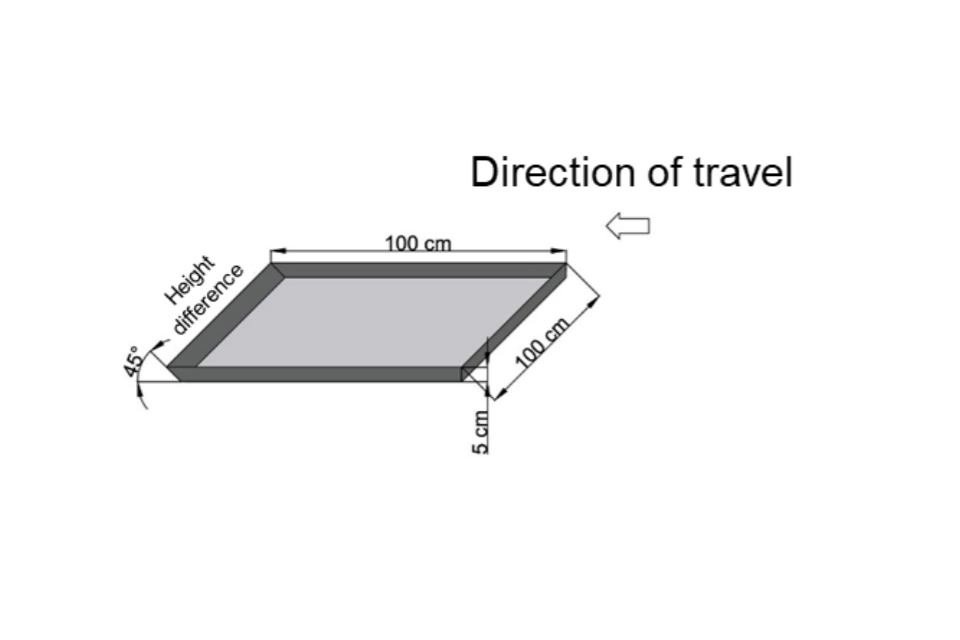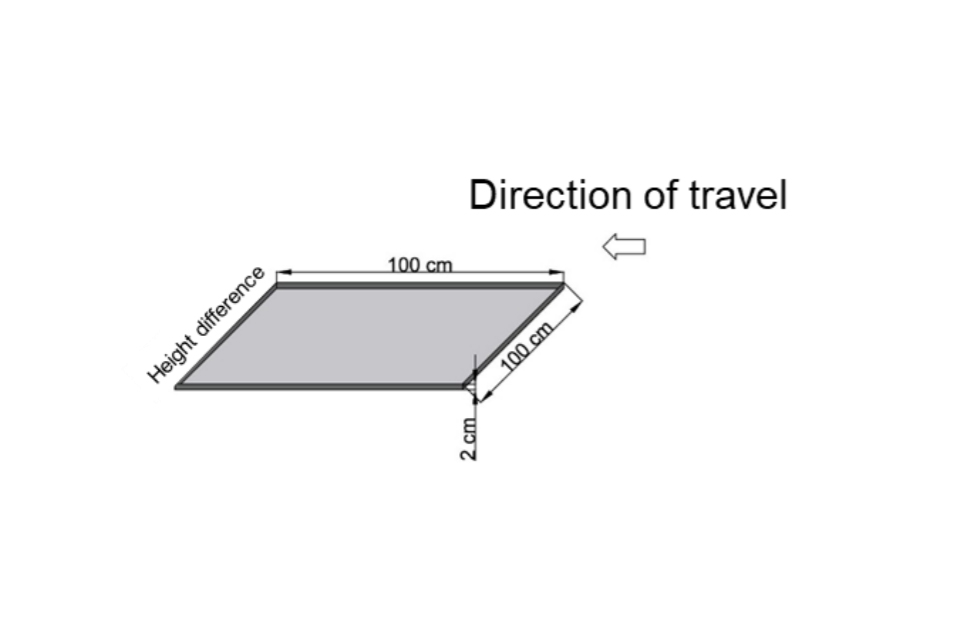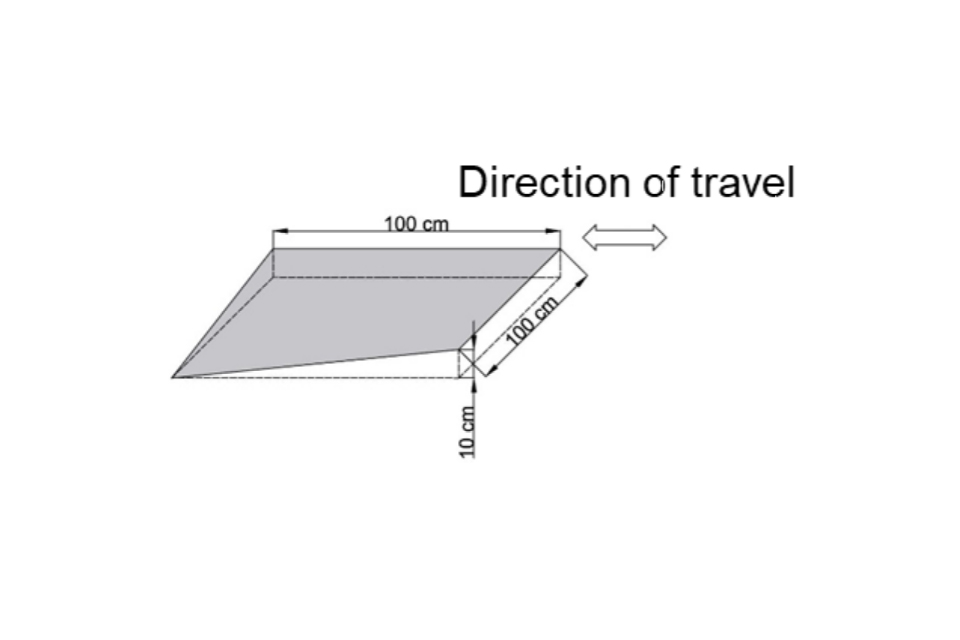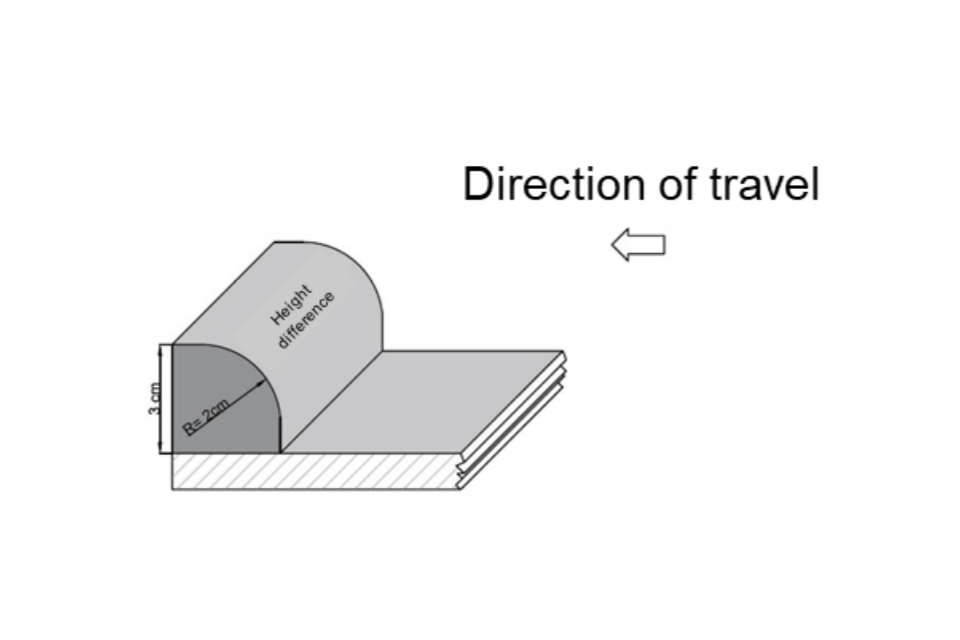E-scooter trials: guidance for local authorities and rental operators
Updated 17 January 2024
Applies to England, Scotland and Wales
Background
The Department for Transport (DfT) made regulations allowing trials of rental e-scooters in July 2020.
This guidance is intended to inform local authorities and e-scooter operators about trial requirements.
There are currently 18 live trials across England and they are due to end on 31 May 2028.
If you are a local authority interested in opening a new trial, you will need to submit an application to DfT.
All proposals for new trials need to come from local authorities. E-scooter operators can take part in the trials only when appointed by a local authority and with the necessary permissions from DfT.
Read separate guidance about using rental e-scooters, including a list of live trial areas.
DfT trial requirements
Insurance
A minimum of third-party cover is required by operators. Though not a legal requirement, operators may also consider insuring against vehicle theft / damage and including personal liability insurance – to all users or on an optional basis.
Unique identification numbers
Operators must ensure that each e-scooter displays a unique identification number (UIN).
To help identify riders, and to assist the police and the public in differentiating between trial e-scooters and privately owned e-scooters, we recommend that this UIN (or a different UIN) takes the form of a plate, stickers or paint. It should be placed where it is clearly visible – for example, on the steering column and/or at the side or rear of the vehicle.
Driving licence capture and validation
To use an e-scooter as part of the trials, all e-scooter users must have a UK provisional licence or a valid, full driving licence from a country that meets the requirements for use in the UK. Users must provide their name and driving licence number and submit a photograph of the front of the driving licence.
Operators must ensure they have robust systems in place for capturing and storing this information and sharing it with the police if requested. This can be done via a third-party provider, as long as the licence details can be retrieved by the operator.
Licence checking software, or customer service team checks, must also be used to check the validity of all driving licences.
Providing training
Operators should provide a minimum mandatory level of training for all new users and additional, incentivised offers of more in-depth rider training.
The level of training should be agreed between local authorities and operators. This could include in-person training sessions and better information provision and incentives for users to engage with it.
Encouraging helmet use
Evidence suggests providing an optional helmet with the e-scooter is an effective measure to encourage use, but we know there are issues with shared helmets.
Operators should consider providing helmets, and introducing incentives for riders to use them, or encouraging riders to use their own helmets.
Parking
For trials to be effective, there will need to be sufficient parking provision in trial areas. Where a dockless operating model is being used, local authorities should ensure that e-scooters do not become obstructive to other road users and pedestrians, particularly those with disabilities.
On-street parking bay markings that display an e-scooter legend require authorisation from DfT. For consistency, applications should follow designs already authorised.
For more information on applying for authorisation please contact authorisation.requests@dft.gov.uk.
Using e-scooters on the road
We have allowed e-scooters to use the same road space as cycles and EAPCs. This means e-scooters are allowed on the road (except motorways) and in cycle lanes and tracks, where possible.
The controls over where e-scooters can be used are split between central government and local authorities. We have made the necessary regulatory changes to allow e-scooters to be used in cycle lanes. But, to have full effect, local authorities hosting trials need to ensure that their traffic regulation orders (TROs) are updated and allow e-scooter use. These should reflect the change in regulations that the cycle lane is for use by pedal cycles or e-scooters.
The definition of cycle track is contained in primary legislation so we cannot amend this for trials. To enable e-scooter use on cycle tracks, cycle tracks will need to be redesignated as cycle lanes. This then allows the process above to be used for cycle tracks.
We are aware that some cycle tracks were made under the Cycle Tracks Act 1984.
TROs can be amended through the experimental, temporary and permanent TRO processes. Local authorities should take advice from their legal teams to ensure that the correct orders are in place for trials in their areas.
Rules for use
Operators must ensure they have in-app messaging that states the rules clearly, including the:
- minimum age for the trial
- rule that the person riding the e-scooter must hold a valid driving licence
General safety
Local authorities should consider including:
-
lower speed limits for new riders
-
parking incentives and penalties
-
geofencing
-
e-scooter safety events
-
further use of technology to improve safety, noting that any technology that alters the vehicle will need to go through our change request process
-
publicity initiatives
Local authorities and operators should also consider how to increase and improve the public’s perception of e-scooter safety.
Taking action to reduce the illegal use of e-scooters
At a local level, operators and local authorities should consider what action they could take to reduce illegal use.
Consideration must be given to reducing illegal use in rental schemes, such as:
- twin riding
- pavement riding
- parents unlocking e-scooters for children
Issues around illegal use could be dealt with by improving training and communication. E-scooter user accounts could also be suspended or deleted where necessary and a ‘3 strikes’ rule could be introduced.
Methods to tackle illegal use outside of the trials should also be considered as this has a negative impact on the perception of trials. These measures could include closer working with the local police and local trading standards, and/or local publicity campaigns.
Provision of user data to the police
Operators must confirm to DfT what information they will provide to the police to identify users if requested. This should, as a minimum standard, include the name and driving licence details of the driver and any other information relating to the identity of the driver.
Monitoring, evaluation and DfT data requirements
Local authorities are required to return monthly situation reports to DfT. Operators must share sufficient data with local authorities to allow them to comply with this requirement. Operators must also provide accurate vehicle trip data to DfT daily via an application programming interface (API).
Operators are also required to work with DfT and our monitoring and evaluation contractors to resolve any data quality issues identified.
DfT will run regular monitoring and evaluation throughout the trials. It is essential for both local authorities and operators to work with the department to deliver this learning activity to allow us to build robust evidence and understand the wider impacts of e-scooters, which is the legal basis for running the trials. As part of this activity, operators can reasonably be expected to host short post-ride surveys in-app and share additional data beyond vehicle trip data.
Although local authorities and operators are able to commission their own research, we ask that you notify DfT of an intention to conduct local research or evaluation. This is so we can support where desired, but also to discuss with you any crossover points: to avoid research participants being contacted multiple times, leading to fatigue and unreliable results.
How we will evaluate the trials
The primary aim of the trials is to build robust evidence about the safety, public perceptions and wider impacts of e-scooters to inform legal changes that may be necessary after the trial period ends.
The secondary aim is to understand how the local transport systems are working, what factors support or hinder this, and learn lessons for future rollout.
The information we gather includes:
-
safety outcomes for e-scooter users and what influences this
-
interaction with, and effect on, other road users
-
public perceptions of e-scooters, including impacts of e-scooters on people with disabilities and related groups
-
nature of modal shift, modal integration and new journeys that have been enabled
-
details of trips made – how far, routes, speed
-
characteristics of users and how uptake and outcomes differ for different groups
-
local authority perception of effects on their transport system
-
lessons for future rollout
-
what a regulatory system for the future should include, such as speed, vehicle standards or licensing
-
any other unexpected outcomes
-
overall costs and benefits to society
Data access and protection
To answer the above questions, we and our monitoring and evaluation contractors require access to operator data sets, including personal data in some cases. DfT will agree access to these data sets directly with trial operators. Local authorities may require similar data and should agree on access separately as part of their procurement processes.
We are committed to working with partners to ensure a proportionate approach to data gathering and have ensured that relevant data protection processes (including opt-out, where relevant) are in place before any personal data collection begins.
Given our personal data access requirements, DfT has drafted a data protection impact assessment (DPIA) to ensure compliance with data protection obligations and meet individuals’ expectations of privacy. Our privacy notice sets out what data is being collected, how it will be used and how long it will be stored for.
Additional e-scooter trial controls
In addition to the regulatory provisions above, local authorities may wish to specify their own additional requirements for trials, such as:
-
the number of e-scooters to be provided in trials – DfT must authorise operator vehicles being used in trial areas, but the total number of vehicles should be agreed by local authorities and demand can be met gradually based on usage data
-
the level of training and availability of helmets, which could be included in agreements
-
the specific areas where trial e-scooters can be parked – for trials to be effective, there will need to be sufficient parking provision in trial areas and where a dockless operating model is being used, local authorities should ensure that e-scooters do not become obstructive to other road users and pedestrians, particularly those with disabilities
-
the use of geo-fencing, either to limit the trial area within a local authority or to prevent e-scooters being used in other local authorities not participating in trials, except with their agreement – this could also include ensuring e-scooters serve particular areas or address specific local transport needs
-
the sharing of data between the local authority and e-scooter operator, in addition to the required data-sharing between operators and DfT
Vehicle approval process
All e-scooters to be used in the trials must meet the minimum technical requirements for e-scooters. Operators will need to demonstrate that their e-scooter is compliant with these requirements through the vehicle approval process before their e-scooter can be deployed.
Operators can request an application form for vehicle approvals at any point during the trials by e-mailing micromobility@dft.gov.uk.
An operator should have a contract or be in the process of bidding for a contract with a local authority before submitting their e-scooter model for approval.
The department will consider vehicle approval applications for seated e-scooters. Before submitting their application the operator will need to demonstrate how the e-scooter complies with either the assimilated type approval EU Regulations 168/2013 or the motorcycle single vehicle approval scheme.
An operator may only submit 2 models for approval within a 12-month period. If an operator can provide valid justification for requiring additional approvals, the department will consider this. The department reserves the right to reject considering an application if it believes the e-scooter will not be used in any trial.
The vehicle approval process is made up of 2 parts – a paperwork assessment and a physical inspection. The department will aim to assess the acceptability of paperwork provided within 2 months of the submission date, if the operator provides all necessary documentation and evidence.
Following this, the operator will need to provide a sample of the e-scooter model to the Driver and Vehicle Standard Agency (DVSA) for inspection. DVSA will aim to perform the inspection within 2 months. Weather conditions or any deficiency with the e-scooter provided may extend the inspection process. Assuming both parts are satisfactorily passed, vehicle approval will be granted.
Minimum technical requirements for e-scooters
The technical provisions for e-scooters will be written into vehicle special orders that enable operators of e-scooters to participate in trials. To be approved for vehicle special orders, operators must demonstrate that their vehicles meet the following technical requirements through the trials vehicle approval process.
Summary of technical requirements required from operators
| Section | Description of requirements |
|---|---|
| General safety | All aspects of the design and construction of the vehicle that are not covered by other items shall be such that no danger is caused or likely to be caused to any person using the vehicle or other road users. |
| Anti-tampering | Measures shall be taken to prevent tampering of: – controls – maximum speed – power |
| Audible warning | Each vehicle shall be fitted with a bell or horn suitable for giving audible warning of the approach or position of the vehicle. |
| Braking | Each vehicle should be fitted with 2 independent braking systems, each of which is capable of bringing the vehicle safely to a halt. Combined braking systems are allowed provided: – a failure in one system does not affect the performance of the other – each system meets the given brake performance requirements below At least one brake must be hand-operated. If a kinetic energy recovery system is counted as one braking system, then the second braking system shall be a friction brake. The braking systems shall meet the following requirements on a dry and level surface and when fully laden. 1. When all braking systems are used in combination, a minimum deceleration rate of 3.5m/s2 or max stopping distance ≤7m from a speed of 15.5mph. 2. Each braking system shall independently be able to achieve a minimum deceleration 1.5m/s2 or max stopping distance ≤15m from a speed of 15.5mph. If a mudguard brake is used, the following conditions shall be met. 1. It shall be constructed of materials that limit wear of wheel and mudguard. 2. It shall be possible to actuate the foot brake over its full travel without interference. 3. Mudguard brake shall have a non-slip surface. The braking force shall be progressive and graduated. Where the e-scooter is fitted with brakes which are intended to be hand-operated the following conditions shall be met. 1. The brake lever intended to be operated by the right hand must operate the front brake. 2. The brake lever intended to be operated by the left hand must operate the rear brake. 3. A single lever operating both braking systems shall be permitted to be operated by either hand. Means to operate brakes must be exclusive for braking. Every part of every braking system and the means of operation shall be maintained in good and efficient working order and be properly adjusted. |
| Mass and dimensions of e-scooters | Minimum payload capacity: 100kg Maximum mass without rider: 55kg Maximum length: 1.5m Maximum width: 0.7m Maximum height: 1.5m |
| Electrical safety | The vehicle and its components of the electrical system including the battery shall be so designed, constructed and fitted as to: – minimise and protect against the risk of electrolyte leakage, fire, explosion and electric shock – ensure electromagnetic compatibility |
| Lighting and reflectors |
Obligatory lamps 1. The vehicle shall be fitted with a front position lamp meeting the following requirements: – colour: white – visibility: easily visible for other road users from a reasonable distance, but not to dazzle oncoming road users 2. The vehicle shall be fitted with a rear position lamp meeting the following requirements: – colour: red – alignment: at or near the rear – visibility: easily visible for other road users from a reasonable distance, but not to dazzle oncoming road users 3. Flashing lamps are permitted with a flashing frequency of 1Hz to 4Hz (60 to 240 times per minute). Optional lamps 1. The vehicle may be fitted with direction indicators. If fitted, the colour of the direction indicators shall be amber. 2. The vehicle may be fitted with a stop lamp. If fitted, the stop lamp shall meet the following requirements: – colour: red – alignment: to the rear Obligatory retro reflectors 1. The vehicle shall be fitted with a red reflector to the rear. 2. The vehicle shall be fitted with reflectors that are capable of reflecting light to each side of the vehicle and shall be of colour either amber or white. 3. Reflective materials (such as reflective tapes) shall be allowed. Optional retro reflectors 1. The vehicle may be fitted with a reflector to the front. If fitted, the colour of the reflector shall be white; 2. Reflective materials (such as reflective tapes) shall be allowed. Use 1. No person shall use/permit to be used on a road any light to cause undue dazzle or discomfort to other persons using the road. 2. Obligatory lamps are required to be kept lit and unobscured when the vehicle is: – used between sunset and sunrise, or in seriously reduced visibility between sunrise and sunset – allowed to remain at rest on a road between sunset and sunrise 3. Lamps and reflectors must be clean and maintained in good working order. |
| Manufacturer’s label | A tamper-resistant, weatherproof label shall be firmly affixed, legible and located in a conspicuous place displaying: – manufacturer name – model identifier – unique identification number – maximum payload – maximum speed – maximum continuous rated power The unique identification number may be located on a separate label positioned elsewhere on the vehicle. If removed, a new label shall be put in its place. |
| Stands | The vehicle must be fitted with a stand that can support the e-scooter when left unattended. The stand – once retracted – shall remain in the retracted position while driving so as not to disturb the vehicle while in motion. |
| Towing | Towing is prohibited. The use of side-cars is prohibited. |
| Tyres | Tyres may be of either pneumatic or non-pneumatic construction. The tyre shall be suitable having regard to the use to which the e-scooter is being put. Any pneumatic tyre shall be so inflated as to make it fit for the use to which the vehicle is being put. The tyre shall: – be maintained in such condition as to be fit for the use to which the vehicle is being put – not have any defect which might in any way cause damage to the surface of the road or injury to the rider or to other persons using the road |
| Stability | The vehicle shall be so designed and constructed as to pass the required stability tests. |
| Software / Firmware | If an operator wishes to update the software or firmware of a vehicle at any time during the trial, the operator must consider whether the update will affect compliance with any requirement within the agreed VSO or the safe operation of the vehicle, and if so, the department must be informed and will need to give approval before the update can be applied. |
Stability tests
In the following stability tests, the vehicle is to be operated on the carriageway elements at 20km/h (or at the maximum design speed if this is lower) and at a speed of 8±2km/h.
The carriageway elements in tests 1 and 2 (in both cases only on the up ramp) and 4 (where the front wheel in the direction of travel is in direct contact with the up ramp/kerb) are in both cases to be approached from a standstill.
In each test, the vehicle must be ridden over the complete carriageway elements and the rider must be able to control it at all times. The direction of travel in which the rider wishes to head must be retained, with a maximum deviation between the target and actual trajectory of 20 degrees being permissible.
Test conditions
The tests are to be performed on a dry, level, non-slip concrete or asphalt surface.
The longitudinal gradient of the test track shall not exceed 1% and its transverse gradient shall not exceed 3%.
The ambient temperature must be between 0°C and 45°C, and wind conditions shall be such that they do not affect the testing.
The battery state of charge shall be at least 75%.
In the case of pneumatic tyres, the pressure shall be set in accordance with the manufacturer’s instructions.
The mass of the vehicle shall be equivalent to its ‘ready-to-ride’ state and the tests are to be performed with a rider of mass between 70kg and 100kg.
Test 1 – Depression
Structure of the carriageway element: a depression in relation to the riding level measuring at least 100cm long x 100cm wide x 5cm high with vertical walls and an exit ramp at an angle of 45 degrees.

Diagram of stability test 1 (Depression) showing a depression in relation to the riding level measuring 100cm long x 100cm wide x 5cm high with vertical walls except for a 45-degree exit ramp. The direction of travel is shown as going towards the exit ramp.
The vehicle to be tested is to be ridden through the depression in a straight line over the kerb towards the ramp parallel to the direction of travel shown.
Test 2 – Up and down ramps
Structure of the carriageway element: a down and up ramp with a height difference of 2cm in relation to the riding level (size 100cm long x 100cm wide).

Diagram of stability test 2 (Up and down ramps) showing a depression in relation to the riding level measuring 100cm long x 100cm wide x 2cm high with vertical walls. The direction of travel is shown as going towards the up ramp.
The vehicle to be tested is to be ridden through the depression in a straight line over the kerb towards the up ramp parallel to the direction of travel shown.
Test 3 – Drop on one side
Structure of the carriageway element: a stretch on which the riding level, over a length of 100cm, drops by 10cm on the left-hand side in the direction of travel or rises by 10cm on the right-hand side in the direction of travel (drop or rise on one side).

Diagram of stability test 3 (Drop on one side) showing a stretch on which the riding level, over a length of 100cm, drops by 10cm on the left-hand side in the direction of travel or rises by 10cm on the right-hand in the direction of travel (test is performed in both directions).
The vehicle to be tested is to be ridden up and down on the stretch with a drop on one side parallel to the direction of travel shown. The vehicle must not be ridden over the edge of the carriageway element with a height of 10cm.
Test 4 – Kerb
Structure of the carriageway element: a kerb with a rounded profile, as shown in the figure below, and a height difference between the carriageway level and the upper edge of the kerb of 3cm.

Diagram of stability test 4 showing a kerb with a rounded profile, and a height difference between the carriageway level and the upper edge of the kerb of 3cm. The direction of travel is shown as going towards the kerb.
The vehicle to be tested is to be ridden up over the kerb at an angle of 90 degrees and an angle of 45 degrees.
